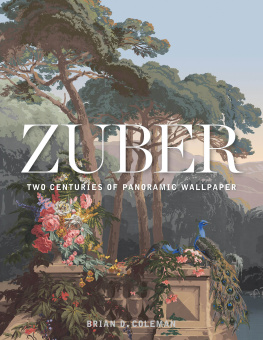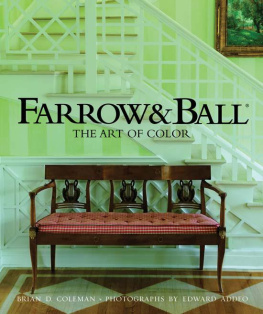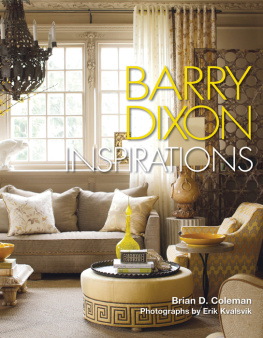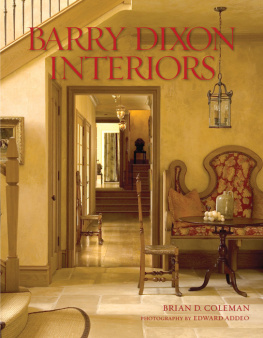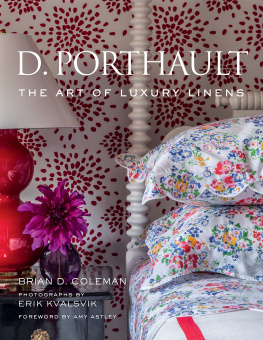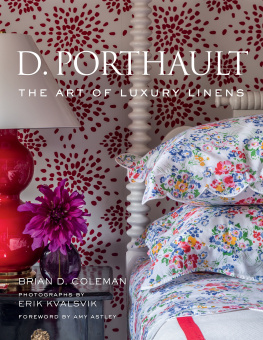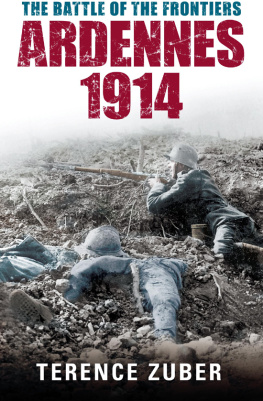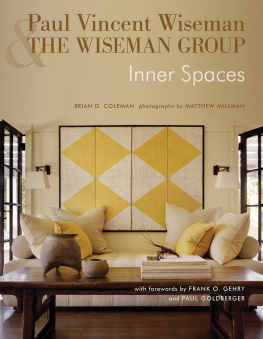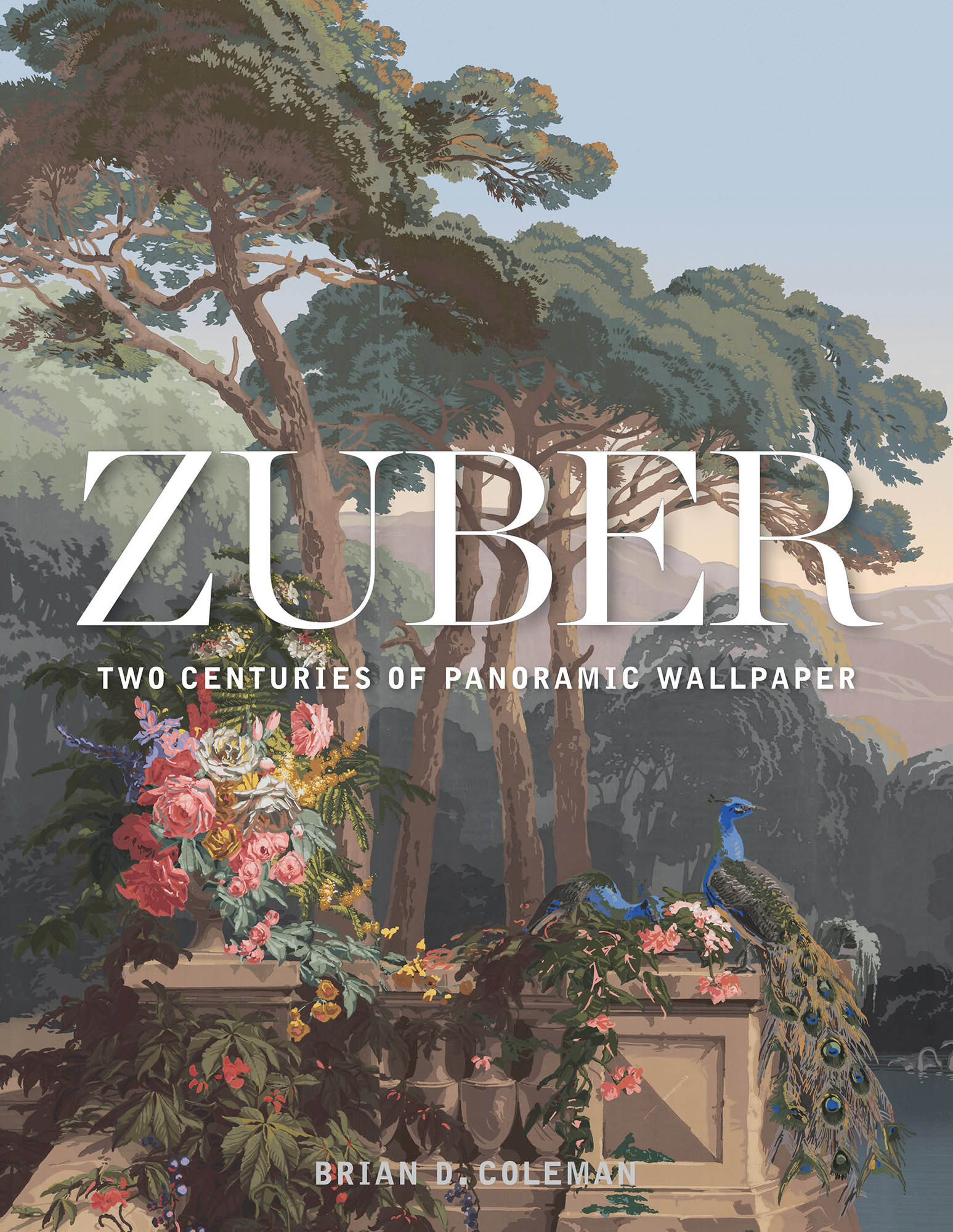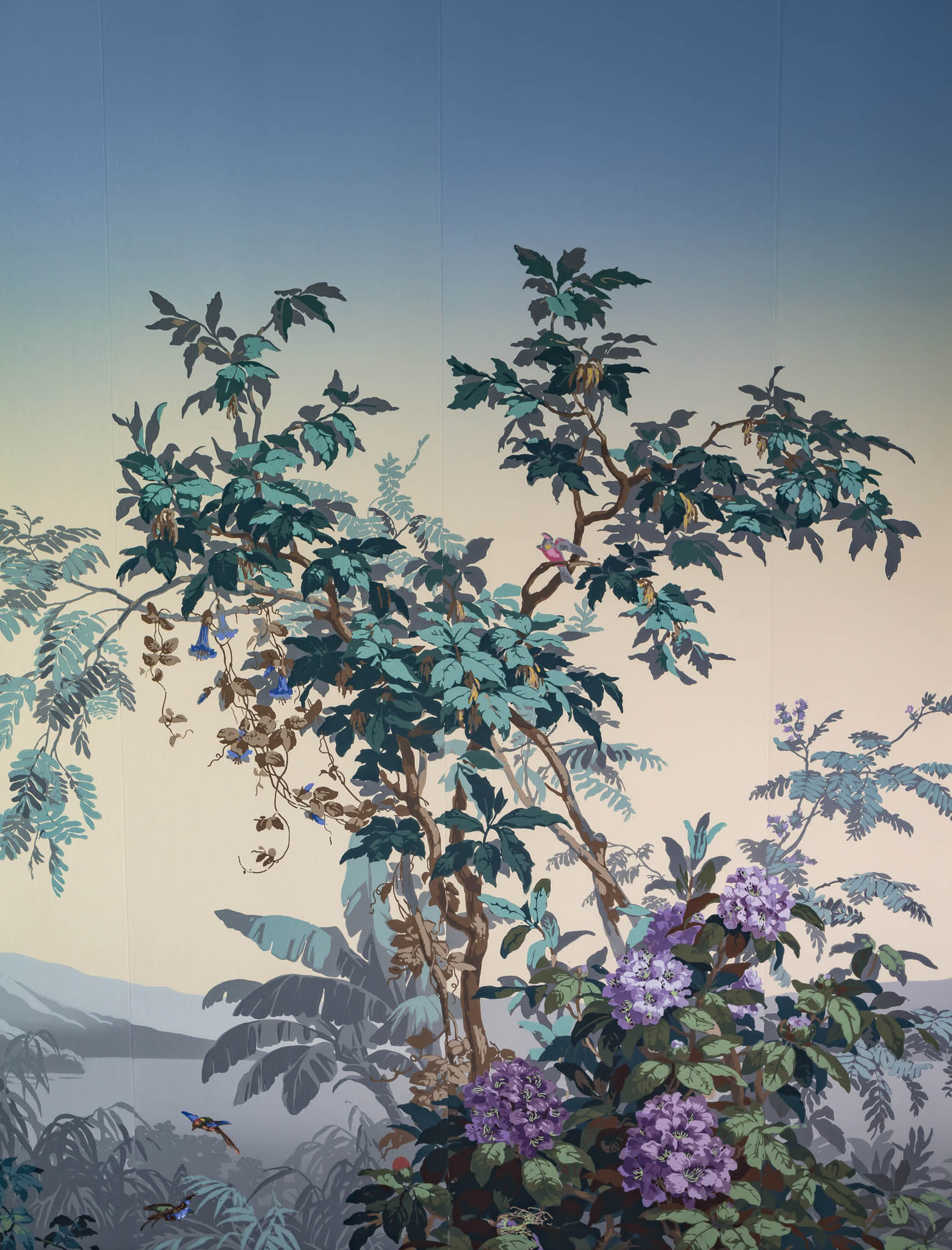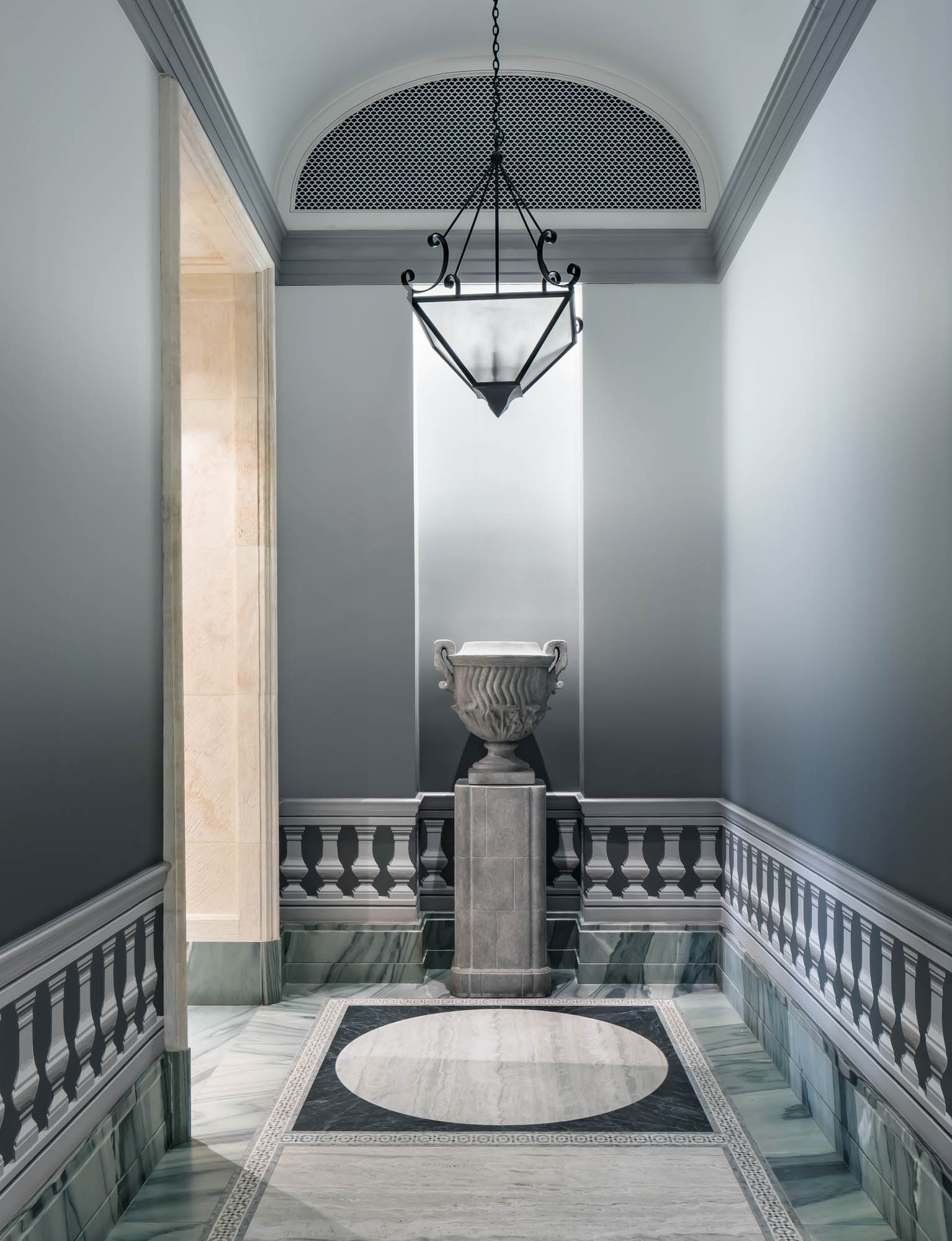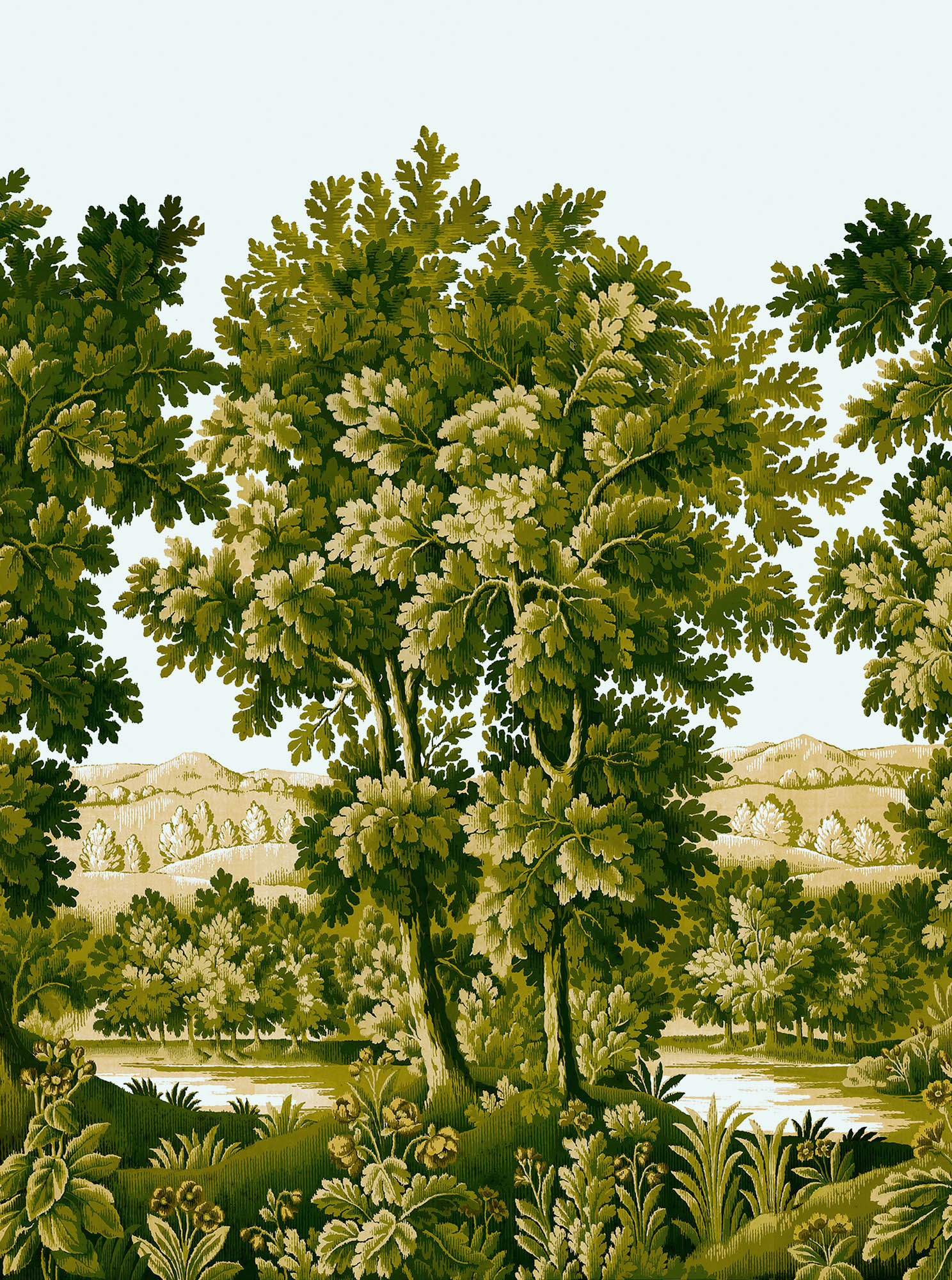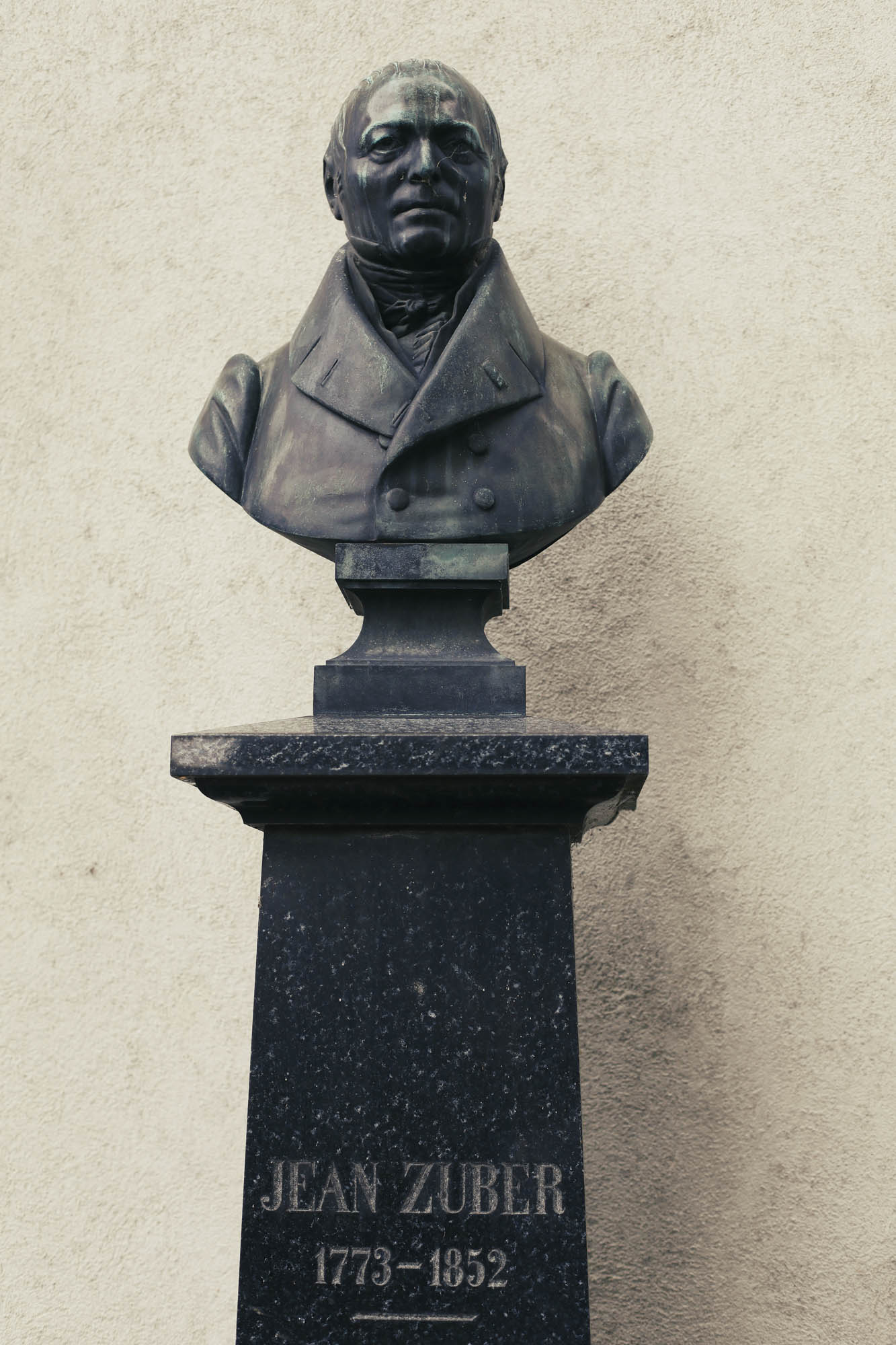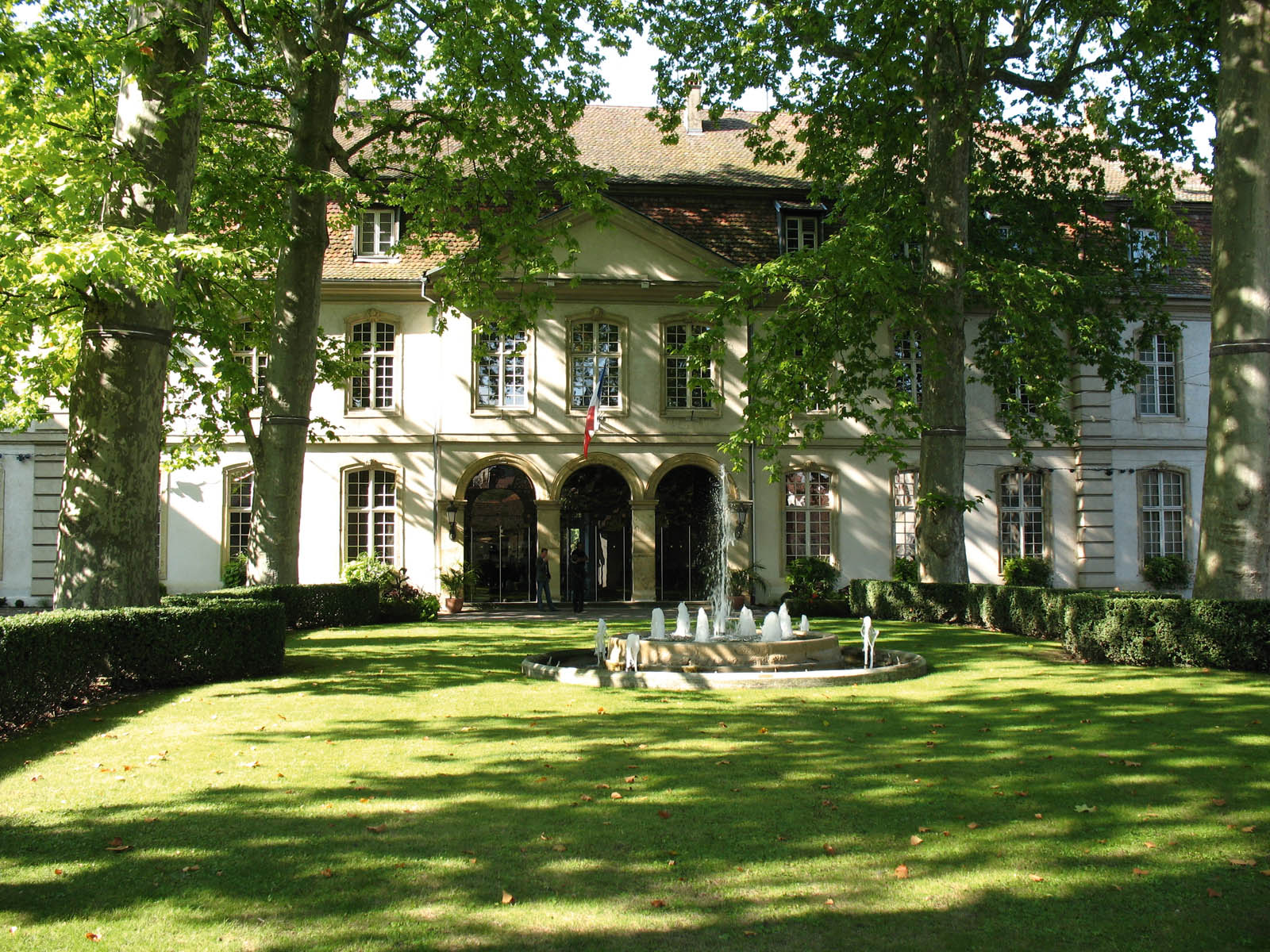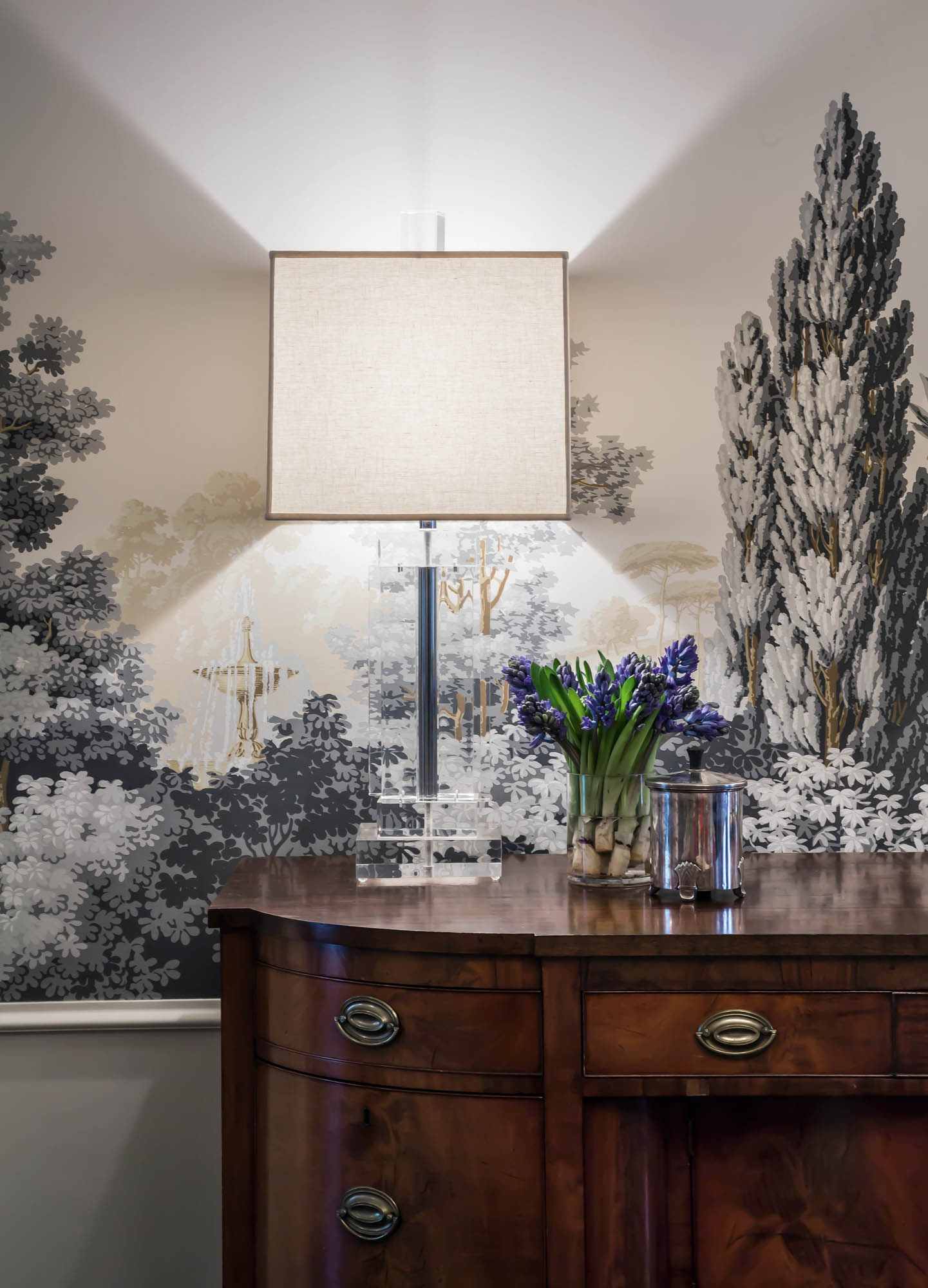brian d. coleman
Photograph 2019 Zuber & Cie.
by Pat Altschul
Ive always been fascinated by Zuber wallpaper,starting as a child when I grew up in Richmond with the Views of America in thedining room. At the time, I didnt know what I was looking at but was intrigued bythe ladies in their beautiful long dresses and hats along with the carriages andhorses. I also remember that the Natural Bridge was depicted because I had visitedit on the way to the Homestead in Virginia.
It wasnt until I was lucky enough to go to the White Housein the 70s and saw the complete series of the Views of America in the DiplomaticReception Room that I learned the name and the maker of the wallpaper as well as itshistory.
When I moved into the house in Oyster Bay New York, I wasstudying genealogy and was very interested in the Revolutionary War and the partthat my ancestors played in it. So when I went to Zuber et Cie in New York City andlooked at all the various scenic wallpapers, I fell in love with the American War ofIndependence. General Washington was encamped at the home of my ancestor, and it wasthere that the planning was done for the defeat of Cornwallis at Yorktown. So I feela personal sense of history and involvement every time I look at the wallpaper.
It was at this time that I met John Nalewaja and Jim Francis,who installed the paper. They explained the placement and hanging of scenicwallpaper is much more complicated than other kinds of wallpaper. The walls have tobe prepared in a certain way with a specific material, and then there is a specialbacking that allows the wallpaper to be removed at a later date (which is exactlywhat I did when I moved to Charleston).
After the hanging was complete, a trompe loeil artist,Prudence Carter, was brought in to do the final in painting and retouches. Being thegifted artist she is, she painted a small image of our then twenty-year-old catSally in one corner. Many years later, when I moved to Charleston, the same team putup the same wallpaper, which I had brought with me. Prudence then added the image ofmy pug dog Lily standing on a hill. Both of these beloved pets are now gone, butits very comforting to see their images preserved on the wallpaper.
I feel very privileged to live with this artistic form ofcreativity, skill, and imagination. Zuber et Cie is the ultimate in decorativeart.
Photograph 2019 Fanny Latour-Lambert.
Introduction
Foreign travel was difficult during the lateeighteenth century, and for those who didnt wish to venture too far from home,dioramic or panoramic spectacles were a popular substitute. For a small fee, viewerscould sit in the center of a room while a series of panoramas painted on screenswere rolled in a circle around them, providing 360-degree views of exotic lands theymight otherwise never see. Inspired by the popularity of this activity, Frenchwallpaper manufacturers began creating similar panoramas for walls. From the ancientruins of Rome to the majestic power of erupting Mount Vesuvius, or perhaps thebrightly colored birds and toothy crocodiles of the jungles of Brazil, panoramicpapers transformed ordinary rooms into exotic and magical locales. They wereteaching tools as well with lessons on geography and history; subjects ranged frommythology, military campaigns, and literature to daily life in foreign lands.
Wallpaper was certainly not new. The Chinese had inventedpaper in 105 AD, and while they didnt use wall-paper in their own homes, they hadbeen producing it for the Western market since the early seventeenth century. ButFrench panoramic or scenic wallpapers (the terms are interchangeable) really stolethe show. One of the most renowned scenic wallpaper manufacturers was Frenchman JeanZuber. His father, a fabric printer from Mulhouse, in northwestern France, hadopened a paper printing workshop in 1790. The company soon found it needed more roomand in 1797 moved to nearby Rixheim, into a former commandery of the TeutonicKnights, where it still operates today. Jean Zuber joined his fathers company atage seventeen as a salesman and by 1802 acquired the company and gave it his name.Artistic and highly detailed designs became their trademark and ensured Zuberslongevity and success. Zuber produced not only panoramas but patterned papers aswell, plus friezes, borders, ceiling roses, and architectural trompe loeil.
However it was the scenic wallpapers that made the companyfamous. Twenty-five panoramas were printed between 1802 and 1860, with talentedartists such as Pierre Mongin (who created seven designs) producing realistic,highly detailed and exquisitely colored murals that remain as enchanting today aswhen they were first created. The amount of work and time involved in each panoramais astonishing: It took 20 engravers working several years to produce Zubers firstpaper, Views of Switzerland, in 1804, using 1,024 wooden blocks and 150 colors forthe 16 lengths. Other highly detailed, colorful panoramas soon followed. Among themost popular were exotic Brsil, historic Vues dAmrique du Norde, excitingCourses de Chevaux, classical Eldorado, and sylvan Zones Terrestres (all ofwhich appear in the pages of this book.) It was this group of twenty -five papersproduced in the nineteenth century that led to the companys preeminence andreputation. More than two hundred years later, Zuber still relies on their archives.They have kept over 130,000 design documents (these can be anything from a wallpapersample to a sketch of a pattern). They still hand produce papers using theircollection of over 150,000 pearwood blocks, used for their fineness of grain.Organizing and working with the blocks is a lengthy process and the number used isdetermined by the complexity of the pattern and number of colors in each individualpaper. It can take up to a year to produce one full set. There are no repeats in apanorama; that is one of its characteristics.
Carved between 1797 and 1870, the woodblocks are stored inthe fifteenth-century vaulted cellars beneath the factory and now are listed ashistoric monumentsan important part of Frances national cultural heritage.Exquisitely detailed, colorful, and romantic, Zuber wallpapers are as magical todayas when they were first created over two hundred years ago. They have withstood thetest of time as icons of beauty and fine design.
Photograph 2019 Zuber & Cie.
The Grand Entry

